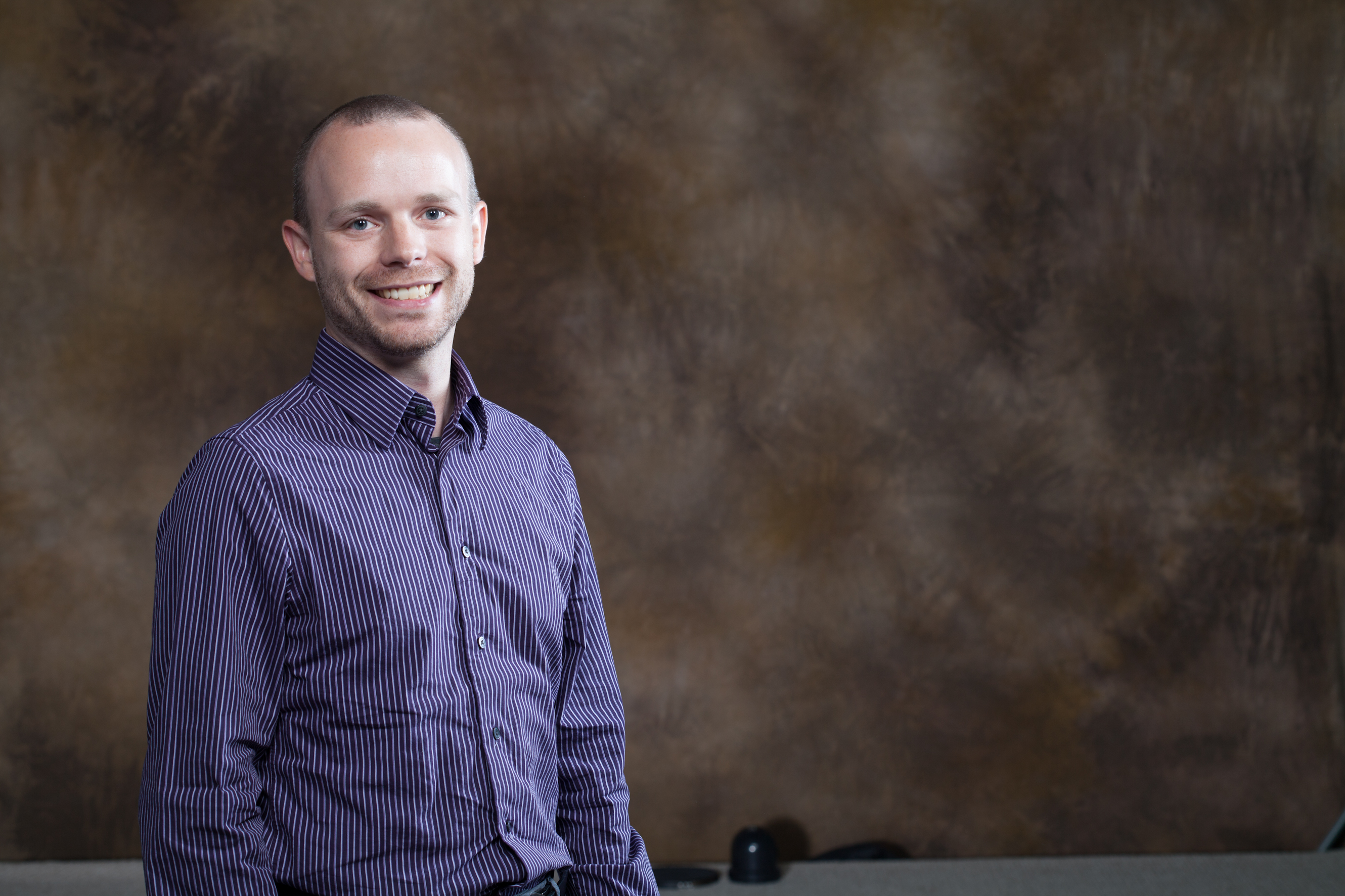New Biomedical Engineering Professor Takes a Closer Look at Disease
Timothy Muldoon looks at cancer in a different way. Using the latest imaging technology, this new assistant professor of biomedical engineering has a non-invasive method of looking at cells in the body. Combined with contrast agents, substances that help medical professionals differentiate between different kinds of tissues, this imaging technology could make it easier to diagnose, treat and monitor diseases like cancer. Muldoon plans to further develop these technologies with the goal of making them available to hospitals and medical clinics.
Muldoon, who holds both a medical degree and a doctorate in biomedical engineering, explained that currently, pathologists must use biopsied tissue to diagnose cancer, determine which treatment is appropriate, and monitor its progression. For example, if a doctor suspects a patient may be at risk of esophageal cancer, the physician can take a few samples from the esophagus and send them to the lab, where they are sliced and examined. However, the pathologist can only say for certain that there are no precancerous cells in those particular samples, leaving unexamined regions behind.
Using the technology Muldoon is working on, a physician could insert a thin fiber-optic microscope down the patient’s throat and look at all the cells in the esophageal wall. Suspicious tissues would show up as an especially thick cluster of cell nuclei. Muldoon explained that this technology would also be useful in monitoring treatments for breast cancer, colon cancer, inflammation, and other conditions.
Muldoon is also studying contrast agents, substances that help doctors more clearly interpret imaging results. Before a reflux test, for example, patients swallow barium, which, unlike stomach acid, is visible on an x-ray. Muldoon plans to investigate newer, more sophisticated optical contrast agents, which use nanotechnology to interact with cells in the body. These new chemicals could vastly improve medical imaging, but first, researchers must understand exactly where the chemicals travel in the body and what effects they might have.
Muldoon has an M.D. degree from Baylor College of Medicine, a doctorate in bioengineering from Rice University and a B.S. in biomedical engineering from Johns Hopkins University. He comes to Arkansas from Columbia University, where he was a postdoctoral research scientist. The University of Arkansas was his top choice among the jobs he applied for.
“I was impressed with the resources and the support the new department received,” Muldoon explained, adding that he looks forward to collaborating with other Arkansas faculty members, as well as with the University of Arkansas for Medical Sciences.
Contacts
Camilla Medders, director of communications
College of Engineering
479-575-5697,
camillam@uark.edu
Headlines
Affairs of the Heart
Find out how biomedical engineering professor Morten Jensen is developing innovative devices to produce better outcomes in cardiovascular medicine.
Students, Faculty and Alumni Kick Off Centennial Year of School of Law
Founded April 14, 1924, the School of Law faculty, students and alumni started the celebration of its centennial year with a Founders Day event and will continue with more commemorative events this coming fall.
Yearly Academic Award Winners, Ambassadors Recognized by Bumpers College
Schyler Angell, Lexi Dilbeck, Cason Frisby, Tanner Austin King, Anna Brooke Mathis, Carrie Ortel, Lucy Scholma, Kadence Trosper and student ambassadors were honored at the college's annual reception.
World Premiere of 'Cries from the Cotton Field' Slated for May 8
Cries from the Cotton Field chronicles the journey of 19th century Italian immigrants from northern Italy to the Arkansas Delta and ultimately to Tontitown. It will premier at 6 p.m. May 8 in Springdale Har-Ber High School.
Fay Jones School's Earth Day Event Spotlights Sustainable Materials and Projects
"One day doesn't seem like a lot, but one day can empower individuals and groups, energize them to work for change and innovate for transformative solutions," professor Jennifer Webb said of the students' design work.





